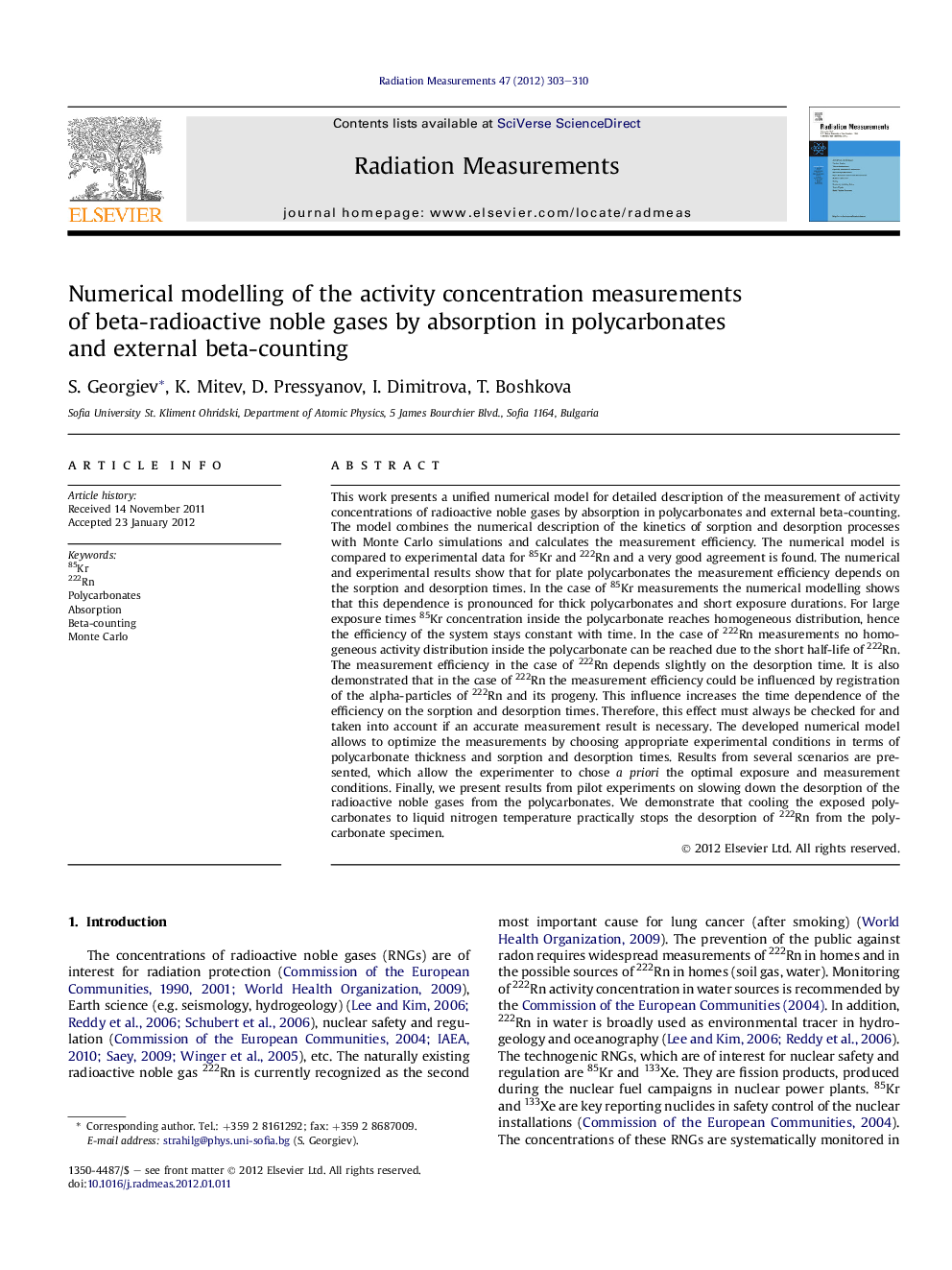| Article ID | Journal | Published Year | Pages | File Type |
|---|---|---|---|---|
| 1885105 | Radiation Measurements | 2012 | 8 Pages |
This work presents a unified numerical model for detailed description of the measurement of activity concentrations of radioactive noble gases by absorption in polycarbonates and external beta-counting. The model combines the numerical description of the kinetics of sorption and desorption processes with Monte Carlo simulations and calculates the measurement efficiency. The numerical model is compared to experimental data for 85Kr and 222Rn and a very good agreement is found. The numerical and experimental results show that for plate polycarbonates the measurement efficiency depends on the sorption and desorption times. In the case of 85Kr measurements the numerical modelling shows that this dependence is pronounced for thick polycarbonates and short exposure durations. For large exposure times 85Kr concentration inside the polycarbonate reaches homogeneous distribution, hence the efficiency of the system stays constant with time. In the case of 222Rn measurements no homogeneous activity distribution inside the polycarbonate can be reached due to the short half-life of 222Rn. The measurement efficiency in the case of 222Rn depends slightly on the desorption time. It is also demonstrated that in the case of 222Rn the measurement efficiency could be influenced by registration of the alpha-particles of 222Rn and its progeny. This influence increases the time dependence of the efficiency on the sorption and desorption times. Therefore, this effect must always be checked for and taken into account if an accurate measurement result is necessary. The developed numerical model allows to optimize the measurements by choosing appropriate experimental conditions in terms of polycarbonate thickness and sorption and desorption times. Results from several scenarios are presented, which allow the experimenter to chose a priori the optimal exposure and measurement conditions. Finally, we present results from pilot experiments on slowing down the desorption of the radioactive noble gases from the polycarbonates. We demonstrate that cooling the exposed polycarbonates to liquid nitrogen temperature practically stops the desorption of 222Rn from the polycarbonate specimen.
► A numerical model of the measurement of beta-RNG absorbed in polycarbonates is developed and validated. ► The model accounts for the sorption and desorption of RNG and for the electron transport. ► The time-dependence of the signal from the polycarbonates is studied by the model. ► The applicability of the model for measurement optimization is demonstrated. ► It is shown that RNG desorption could be slowed (stopped) at liquid nitrogen temperature.
